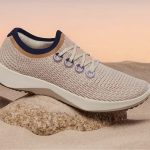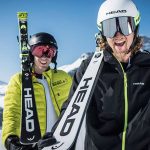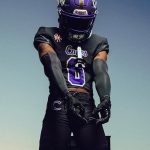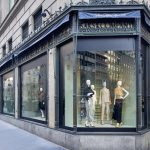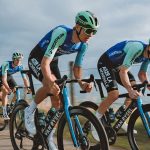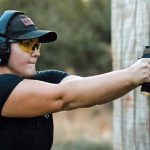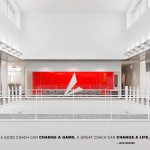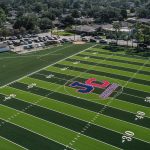Amer Sports saw the third quarter largely mimic the trends the company saw in the first half of the year as a difficult sales environment negatively impacted the top-line and declining margins negatively impacted earnings.
EMEA (Europe, Middle East and Africa) and Asia Pacific were basically flat to last year in currency-neutral terms, but the Americas was again problematic for the parent of Wilson Sports, Precor, Salomon, Arc’ teryx Atomic, Suunto and Mavic. Net sales for the third quarter declined 5.2% to €410.6 million ($587 mm) with currency-neutral sales down 6% for the period. In a presentation to analysts and the media, Amer said that business conditions have been particularly challenging in the U.S. market and consumers are looking for more value oriented price-points.
In spite of these challenges, Amer was able to successfully float a rights offering that was over-subscribed. As a result, Amer’s balance sheet was quite healthy at quarter-end with a substantial amount of cash on-hand. The rights offering added an additional 48.5 million shares and raised €160 million ($236.1 mm) with €152 million ($224.3 mm) going to Amer Sports. The proceeds will be used to pay down existing debt.
In the Wilson Ball Sports group net sales declined 6.5% to €103.4 million ($148 mm) from €110.6 million ($167 mm) in the year-ago period, or a 9% decline in currency neutral terms. In home market U.S. dollar terms, which makes up roughly 84% of the segment revenues, sales fell 11.3%, with fairly even pain across all categories.
Racquet Sport sales declined 11.7% in U.S. dollar terms to $75 million (€53 mm). Strong sales in the Asia Pacific region were offset by declines in EMEA and The Americas.
Golf sales also declined 11.7% to $21 million (€15 mm) with Wilson performing better in the EMEA region than in the U.S.
Team Sports sales fell 10.6% to $51 million (€36 mm), with Soccer sales up 14% for the period and Football sales down 11% for the period. Management said that Baseball sales were flat, but Amer said they gained market share in a soft market.
Wilson group EBIT fell 65.5% in U.S. dollar terms to $3 million (€2.4 mm).
Net sales in the Precor Fitness division declined 18.5% in euro terms to €44.8 million ($64 mm) from €55.0 million ($83 mm), reflecting a 23% decrease in U.S. dollar terms and a 20% decrease in currency-neutral terms. Management said that the commercial sector has been heavily impacted by tighter credit, impacting fitness clubs’ ability to finance equipment purchases.
The company is restructuring to offer more consumer products through new distribution and the Internet is also being used to drive numbers. Still, the company said consumer purchases suffer from a “very low level of discretionary spending.”
As previously announced, Precor is building a new facility for strength equipment in North Carolina, moving that operation from California. The facility is on track to open by the end of this year or beginning of next year.
Precor posted an EBIT loss of $2 million (€1.4 mm) compared to an EBIT profit of $4 million (€2.8 mm) in the year-ago period.
Net sales in the Winter and Outdoor group, which includes Salomon, Atomic, Arc’Teryx, Suunto and Mavic, dipped 1.9% to €262.4 million ($375 mm) from €267.6 million ($403 mm), or a 2% decline in local currencies, in the year-ago period.
The Winter Sports Equipment Q3 business declined 7.1% in euro terms, or 8% in local currencies due to requested later deliveries into Q4. Management said that their business in Europe has accelerated compared to the same quarter last year, but this was offset by a weak North American market and later deliveries of product. The order level was seen as flat to last year’s level in assessing orders through last week, so the negative number for Q3 indicates orders shipping later this year.
Winter Sports Equipment profitability was seen as improving as the cuts made over the last few years are starting to have an impact.
The main issue in the order book is based on issues in the U.S. market. Another element that was brought up by management was the movement of orders booked from local or in-city retailers to more product being purchased by ski resorts, which would also explain the later shipment of orders. Management said they saw in some countries a phenomenon where big city sporting good stores were entirely dropping their ski lines and more of the business has moved to resorts and closer-to-the-mountain stores, a trend not unlike the 2006/2007 season. Some of this is clearly explained by the movement to more rental business once consumers get on the mountain instead of purchasing new goods each year at a retail store.
The Apparel / Footwear business increased 6.2% in euro terms, or a 7% increase in local currencies due to strong demand in Europe and higher than expected re-orders of Salomon footwear. Management said they could not yet report on order levels for Spring/Summer 2010 as orders are still being tallied.
The Cycling business fell 8.5% in euro terms (down 10% in local currencies) due to a general trend towards lower inventories among independent bike dealers. The OEM business was hit even harder and they see it as a very soft business going forward. The recall of the R-SYS high-end carbon-fiber wheel had an impact on the margins for the overall Winter and Outdoor business.
Management said that they are still exploring strategic alternatives for the Mavic brand.
The Sports Instruments business was fairly flat for the period due to declining sales of diving instruments in the U.S., but they see it picking up a bit. The diving decline for the period was offset by the launch of the Elementum watches product line, which helped drive sales to new customers.
EBIT for the Winter and Outdoor group declined 3.5% to €44.1 million ($63 mm).
Total Amer Sports gross margins declined 130 basis points to 41.7% of sales from 43.0% of sales in Q3 last year. Net income declined 12.5% in euro terms to €28.8 million ($41 million) from €32.9 million ($50 mm) in the 2008 third quarter.
Looking ahead, Amer Sports CEO Roger Talermo said, “We do not anticipate a quick recovery of the sporting goods market, even if trading conditions would start to improve next year. Hence, we will continue to focus on strict cost control and we are planning to take our cost base further down in order to protect the Amer Sports bottom line. We are also considering alternatives to shift the focus of the business portfolio more towards categories where we believe the best long-term opportunities exist and where the best group-wide synergies can be achieved.”
The company said that the market outlook for Amer Sports has not changed during the third quarter and the company's guidance remains unchanged. Amer Sports full-year 2009 EBIT will be below last year's level. The expected improvement for Winter Sports Equipment due to previously implemented cost-efficiency measures is more than offset by weakness in other Amer Sports businesses.

